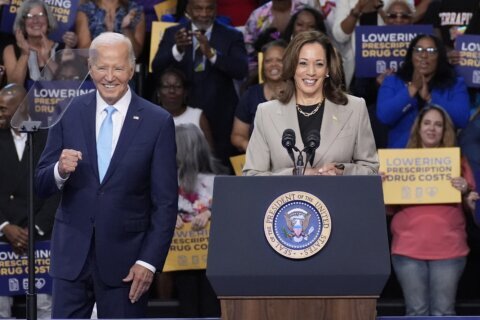Parents walking their young children into school for the first time may get excited at the books lining classroom walls — but those collections of books aren’t necessarily a guarantee their kids are going to learn to read them.
According to cognitive scientist and reading expert Pamela Snow, parents may be surprised to learn that they are “buying a lottery ticket” when it comes to the kind of reading instruction their child will get at school.
Some kids will pick up reading quickly no matter what, as if by magic. But due to a variety of factors, about 60% of kids will need systematic, direct instruction to help them turn letters and sounds into words, according to the International Dyslexia Association. That includes the 10% to 15% of students who may be considered dyslexic — for them, reading will always be slow and laborious without intensive, repetitive instruction.
One major reason kids struggle is that many schools don’t teach in a way that’s supported by scientific evidence on how the brain learns to read. “Some will align strongly with the scientific evidence,” Snow wrote in a 2019 blog post. “Lucky you, if that’s the kind of school your child is attending. Others, however, use a mixed-bag of approaches.”
The “mixed bag of approaches” is the result of decades of disagreement over how best to teach reading. These so-called “Reading Wars” pitted the “whole language” approach, which viewed reading as a natural process that kids would pick up with repeated exposure to words and books, against phonics instruction, in which students are explicitly taught how the sounds of language are connected to the combinations of letters on the page.
[READ: When to Be Concerned About a Struggling Reader.]
Starting in the 1990s, many schools attempted to reconcile the two with an approach called “balanced literacy,” which was intended to combine the whole language emphasis on meaning-making with some instruction on learning to read words explicitly. While it incorporates some phonics, balanced literacy also teaches kids to rely on tricks like guessing at words based on the picture or the first letter of the word.
The balanced literacy method has been widely used over the last few decades, yet hasn’t been particularly successful: Recent national reading assessments show that only about 35% of the nation’s third graders read proficiently.
In contrast, “structured literacy,” is based on more than three decades of scientific research on how the brain learns to read, often referred to as the “science of reading.” Structured literacy holds that many children don’t pick up reading naturally — they need to be explicitly taught how to connect sounds to the printed letters themselves, a process called “decoding.” Students learning with this approach spend a lot more time in the early grades on phonics and “sounding out” words. At the same time, phonics is taught within the context of reading, with the goal of being able to read books fluently and understand them, which is why structured literacy also builds vocabulary and background knowledge to aid with comprehension.
Experts say the most important thing parents should know is that kids getting structured literacy at school have a much higher chance of reading success — it’s the method used in expensive tutoring for struggling readers or students with learning disabilities like dyslexia, yet it works equally well for students without a disability.
“English is a complex written language, this is one of the reasons it’s such a vexing problem,” says journalist Emily Hanford, who has spent the last several years investigating why so many kids struggle to read well. “So what parents want to see is that the school has a plan helping kids go from speech to print. You want to see them taught explicitly how written language works.”
How to Tell Which Method Your Child’s School is Using
Tina Engberg, state leader of Decoding Dyslexia of Georgia, helps parents of struggling readers figure out which method their schools are using with a YouTube video called “The Purple Challenge.”
The video shows how a mom (who is also a behavioral scientist) figured out her first grader was learning to read by using pictures or the context of the sentence to guess at words she didn’t know. When the pictures and context were removed, her child no longer recognized some of the same words — she wasn’t really reading.
“The emphasis should be building on the sounds of our language, not the rote memorization of letters,” Engberg says. “If you’re not hearing about phonemes and phonemic awareness and spelling rules, you’re in a balanced literacy district or school that is likely to impede your child’s progress in reading,”
[Read: When Do Kids Learn to Read?]
Christie Andrews, executive director of Learning Matters in Nashville, Tennessee, says parents should not be afraid of asking questions to determine how their child is learning to read. Ask teachers for the name of the reading curriculum, then go home and Google it.
“Ask Google if the name of the curriculum is consistent with the science of reading,” Andrews says. Resources and recent news stories will appear.
Andrews and other experts also laid out the hallmarks for each kind of reading instruction, so parents can look for clues.
Signs of a Balanced Literacy Classroom:
— There will often be a “word wall,” showing a bunch of words that begin with the same letter, like a, but making a variety of sounds. For instance, alligator, art and age might be together, even though the initial sounds are different.
— There may be a poster or handout that goes home showing a set of strategies with cute names like “Tryin’ Lion” that involve using picture clues or first-letter clues to guess at words. This approach is often referred to as “three-cueing” or “meaning-structure-visual” (MSV). Research has shown that guessing at words makes learning to read harder.
— Teachers will often use words like “guided reading,” “just-right books” and “balanced literacy”– “which sounds good because ‘balanced’ feels right,” Andrews says. “But that’s not how we teach kids to read. We don’t want any strategies that encourage guessing.”
Signs of a Structured Literacy Classrooms:
— In addition to, or often instead of, letters of the alphabet lining classroom walls, there may be a “sound wall” showing all the different sounds that letters make. Sometimes they’re accompanied by pictures of mouths making the different sounds.
— There will be “decodable readers” in class or coming home with students. These books are often made up of very simple words that feature the sound combinations students are working on in class.
— Overall, structured literacy classrooms put a big emphasis on sounds: Teachers will use words like “phonemic awareness,” and “phonemes,” and students will generally concentrate first on the sounds that combinations of letters make.
— Students will also focus on spelling and word meaning, often breaking down words into the base, prefixes and suffixes called morphology.
If schools are following the research, early readers should get about 30 minutes of phonics per day, according to reading researcher Timothy Shanahan, who was a member of the National Reading Panel, a group of experts convened by Congress in the late 1990s to determine what works in reading instruction. But that should be alongside or embedded in a more comprehensive reading program, he wrote in a recent blog post. In order to be able to read well, students need more than just phonics — they also need to be working on building background knowledge and vocabulary, reading text fluently and writing. All those factors come together to make a proficient reader.
[READ: 7 Strategies to Increase Reading Comprehension.]
What Parents Can Do if Kids Are Struggling
If students appear to be struggling with any aspect of reading, Andrews says parents should not wait to say something to the child’s teacher. Parents can ask to set up a meeting with the school’s support team, and ask to see any data being gathered on their child’s progress.
“Any parent can call that meeting at any time,” Andrews says. Parents can ask if their child has been given a screener to check for learning disabilities like dyslexia, or ask what percentile their child is in for the school’s benchmark testing, which monitors each student’s progress.
Schools in general, and especially when it comes to reading instruction, are filled with confusing acronyms and educational jargon. If parents don’t understand what something means, they should ask for explanations in plain language.
While some kids will be diagnosed with a learning disability like dyslexia, other kids are only struggling to learn to read because they aren’t being taught using the methods of structured literacy. Learning to read is a complex process, and often figuring out the reason why kids are struggling can be just as complex.
[READ: What Is Dyslexia?]
There is a bit of hope: After many years reporting on the challenges of frustrated parents and kids, Hanford says she can see that the struggle over how to teach kids to read is beginning to change.
Due in part to journalism like hers and passionate parent advocates, more schools are becoming aware of structured literacy and implementing approaches that are supported by research. More teachers are being trained in the science of reading, and can recognize the signs when a child isn’t catching on.
“Now there’s a higher chance that if your child is struggling, the teacher comes to you rather than the other way around,” Hanford says, and a better chance the teacher knows how to address the issue.
Another bright spot is all the information available for parents, who no longer have to hope that a room full of books is a reliable sign their child is learning to read.
“More books does not make kids good readers,” Andrews said. “Instruction is how we make good readers.”
Resources for Parents:
— Tips to help your child with reading at various age levels, from Reading Rockets
— A parent’s guide to structured literacy: a YouTube series from Neuhaus Education Center
— Cox Campus for families: free videos and resources on reading
More from U.S. News
What Should a First Grader Know?
How to Encourage a Reluctant Reader
How to Improve Reading Skills in the Early Grades
Is Your Child Getting Good Reading Instruction? originally appeared on usnews.com







